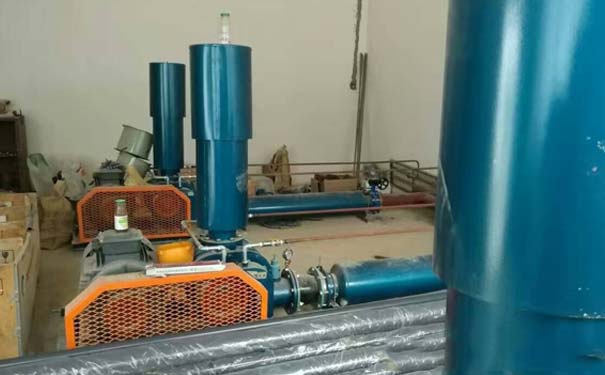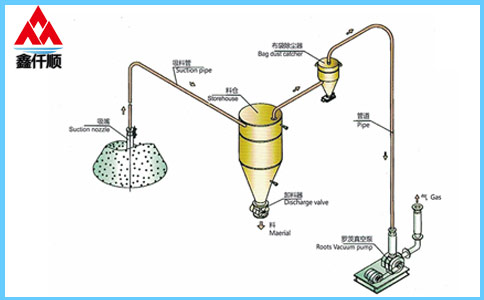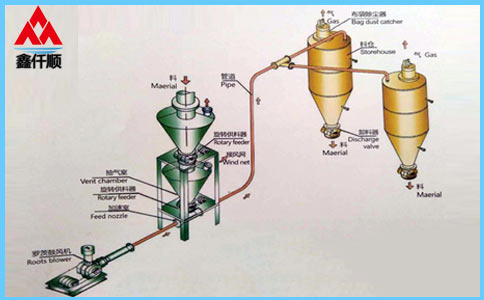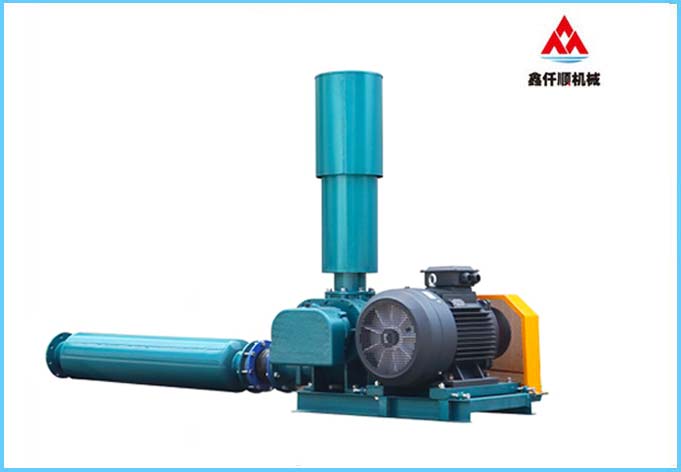The instrument panel of Roots blower includes barometer, voltmeter and flowmeter, which are the key instrument panel. When the Roots blower is operating, if the barometer is too large, it will be a problem of pipeline blockage and internal blockage; If the voltmeter and flowmeter are too large, there will be blockage. Check the inlet and outlet of Roots blower also have pipeline conditions; If the voltmeter and flowmeter are too small, the working voltage will be unstable.
The rotor of Roots blower rotates in the opposite direction at constant speed through the gear. The impeller is always kept in the correct phase by the synchronous gear. The two impellers of Roots blower mesh with each other to separate the air inlet from the air outlet. The impeller, the casing and the wallboard form a closed primitive volume, and its size does not change during the rotation process, During the operation of the fan, the gas in the unit volume will be moved from the air inlet to the air outlet to achieve the purpose of forced exhaust. The air volume delivered by the fan is proportional to the number of revolutions. Two impellers suck and exhaust three times every time the three blade impeller rotates. Compared with the two blade impeller, the gas pulse is less, the load change is less, the mechanical strength is high, the noise is low, and the vibration is small.
When Roots blower is running, it will cause necessary noise. The noise is attributed to all normal mechanical equipment sounds. If there is any abnormal sound, we must turn on the blower to check whether there are hard particles inside the centrifugal impeller and housing; If the sound source comes from the external vibration of the engine body, then our maintenance position should be placed on the fixed anchor bolt.
In such a situation, the power supply should be turned off immediately for parking. The key positions for subsequent maintenance are gearbox, belt pulley, centrifugal impeller rolling bearing, coupling, etc. The external conditions should be checked first, and then the internal conditions should be checked for maintenance.
The key to the maintenance of high-pressure roots blower is to distinguish the position of common faults according to the external main performance. Because the structure of roots blower is different, such as direct drive system, synchronous belt drive, reverse flow cooling, etc., there will be different unique faults in different construction methods. The above mentioned is the analysis of common faults of common roots blower.
Due to its simple structure, the high-pressure Roots blower is relatively simple to repair. If it is a simple common fault and self repair, if there is a relatively serious common fault, technical professional maintenance must be carried out. After the maintenance of Roots blower, various inspections must also be carried out to ensure that all the machinery and equipment operate normally.
1. Check the fastening of each part and whether the locating pin is loose;
2. Whether there is water and oil leakage inside the fan body;
3. There shall be no scaling, rust and scaling inside the fan body;
4. Pay attention to whether the lubrication and cooling conditions are normal, and pay attention to the quality of lubrication. Always listen to the fan for noise. Pay attention to whether the unit operates under conditions that do not meet the requirements;
5. The overload of fan is sometimes not displayed immediately, so pay attention to the increasing trend of inlet and exhaust pressure, bearing temperature and motor current to judge whether the machine operates normally;
6. Before disassembling the Roots blower, measure and record the matching dimensions of the machine, and mark the parts to ensure that the original matching requirements are maintained after assembly;
7. Splash lubrication is adopted for the bearing and gear of the fan. It is recommended to use N68-N150 medium extreme pressure industrial gear oil. Users can also choose appropriate lubricating oil by themselves. The performance of lubricating oil must be equivalent to the above lubricating oil to facilitate the normal operation of the gear and bearing, The oil volume in the oil tank shall be ensured to be 3-5 mm above the center line of the oil pointer during shutdown, and the lubricating oil shall be replaced regularly (the first startup shall last for 200 hours, and the first oil shall be replaced), and then the oil shall be replaced every half a year. Clean the oil tank and gear with neutral kerosene before injecting new oil;
8. The maintenance and overhaul shall be carried out on schedule according to the specific use conditions, and a reasonable maintenance system shall be formulated and recorded. It is recommended to overhaul once a year, and replace bearings and relevant vulnerable parts.
I believe that after reading the above contents, you should also know what parts of Roots blower need to be overhauled. I hope it will help you.
Text label: Roots blower
Link to this article: //wuhanzhcs.com/html/news/n02/735.html










